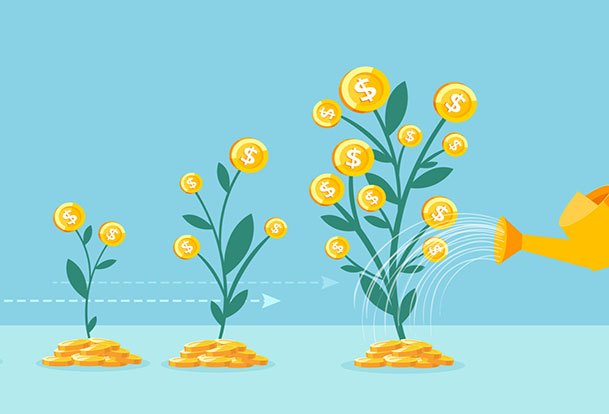3 Steps to Planning Your Retirement
Published on August 17, 2020
minute read
Share:
Retirement means different things to different people: No longer tied to workday demands, retirees are often thrilled to be able to devote more time and energy to activities that matter most to them, often discovering new passions in the process.
At the same time, the prospect of living on a fixed income can be worrisome. Some of the most common concerns of pre-retirees include:
- "Will I have enough income to maintain my current lifestyle?"
- "What will happen if I outlive my money?"
- "Will I be able to leave an inheritance to my family?"
Taking the time now to set goals and create a plan for your retirement will help you move into the next chapter of your life with confidence.
Step 1: Define your goals
The first task is to pin down what retirement means to you. Do you intend to travel? Are you considering a move to a smaller home? Will your lifestyle stay the same or will it change radically?
As a general guide, you can expect to require 70% to 80% of your annual pre-retirement income to support your current lifestyle. However, the amount you need will depend primarily on what you plan to do in retirement. Other factors that will affect your income needs include your age, health, debt load and family obligations.
Ask yourself the following questions to help you define your retirement goals:
- How many years do I have until retirement?
- How do I wish to spend my retirement?
- Will I want to work part-time, even though I'm retired?
- Will I still have family to support during my retirement?
- Do I want to use all of my savings during my lifetime, or would I rather leave an estate?
- How are inflation and other factors going to affect my savings?
- Am I prepared to change my lifestyle now for a higher standard of living in retirement? Or, will I be satisfied with a more modest lifestyle as a retiree?
Generally you can expect to require 70% to 80% of your annual pre-retirement income to support your current lifestyle.
Step 2: Chart your path
With a good idea of what you plan to do in retirement, you can estimate roughly what it will cost. The next step is determining your current net worth.
Start by creating a balance sheet: Itemize everything you own (your assets) and subtract what you owe (your liabilities) to arrive at your net worth. If the number is lower than you would like, consider the following strategies to help boost your nest egg:
- Maximize your Registered Retirement Savings Plan (RRSP). If you have unused RRSP contribution room from previous years, take advantage of the ability to "catch up" your contributions. The tax-deferred growth within your RRSP may still be quite significant, allowing your investments to continue to grow. To reduce volatility and enhance potential returns, diversify your RRSP with both equity and fixed-income holdings. Be sure to also make the most of various income-splitting strategies, such as spousal RRSPs. This will help equalize your retirement income with your spouse's, potentially resulting in a reduced overall tax liability.
- Eliminate debt. The cost of debt payments eats into your available income when you're retired. If you are currently carrying a number of small debts at high rates — such as credit card balances — you may want to consider consolidating your debts with a line of credit. With today's competitive rates and flexible terms, a line of credit can provide you with the opportunity to clear up high-interest debt.
- Consolidate your investments. Consolidating your assets with one financial institution can make it easier to manage and diversify your portfolio, and may reduce your overall costs related to managing your investments.
- Make your portfolio as tax-efficient as possible. Are you paying more to the government than you have to? Different types of income are taxed in different ways. Interest income, for instance, is fully taxable, while capital gains and Canadian source dividends receive preferential tax treatment when held outside a registered plan. You can arrange your registered and non-registered investments to incur as little tax as possible.
Step 3: Let your cash flow
In addition to your own registered and non-registered assets, you may receive retirement income from the following sources:
- Government benefits. If you have lived and worked in Canada for most of your life, you will probably be eligible for payments from the Canada/Quebec Pension Plan (CPP/QPP) and possibly Old Age Security (OAS). These payments can be a valuable supplement to your other sources of income.
- Company pension. If you have belonged to an employer-sponsored Registered Pension Plan (RPP), check with your employer about the benefits you are likely to receive. There are several types of plans, each with different methods for determining payouts. If you want to manage your company pension investments, consider converting your RPP into a locked-in retirement account at RBC Direct Investing (consult with a professional advisor if you are considering this option).
- The sale of a business or property. If you own a business or property, selling it will generate additional capital that may be used as a source of income for you in your retirement.
Taking the time to plan now will help you create the retirement of your dreams — worry-free.
RBC Direct Investing Inc. and Royal Bank of Canada are separate corporate entities which are affiliated. RBC Direct Investing Inc. is a wholly owned subsidiary of Royal Bank of Canada and is a Member of the Canadian Investment Regulatory Organization and the Canadian Investor Protection Fund. Royal Bank of Canada and certain of its issuers are related to RBC Direct Investing Inc. RBC Direct Investing Inc. does not provide investment advice or recommendations regarding the purchase or sale of any securities. Investors are responsible for their own investment decisions. RBC Direct Investing is a business name used by RBC Direct Investing Inc. ® / ™ Trademark(s) of Royal Bank of Canada. RBC and Royal Bank are registered trademarks of Royal Bank of Canada. Used under licence.
© Royal Bank of Canada 2025.
Any information, opinions or views provided in this document, including hyperlinks to the RBC Direct Investing Inc. website or the websites of its affiliates or third parties, are for your general information only, and are not intended to provide legal, investment, financial, accounting, tax or other professional advice. While information presented is believed to be factual and current, its accuracy is not guaranteed and it should not be regarded as a complete analysis of the subjects discussed. All expressions of opinion reflect the judgment of the author(s) as of the date of publication and are subject to change. No endorsement of any third parties or their advice, opinions, information, products or services is expressly given or implied by RBC Direct Investing Inc. or its affiliates. You should consult with your advisor before taking any action based upon the information contained in this document.
Furthermore, the products, services and securities referred to in this publication are only available in Canada and other jurisdictions where they may be legally offered for sale. Information available on the RBC Direct Investing website is intended for access by residents of Canada only, and should not be accessed from any jurisdiction outside Canada.
Inspired Investor brings you personal stories, timely information and expert insights to empower your investment decisions. Visit About Us to find out more.










